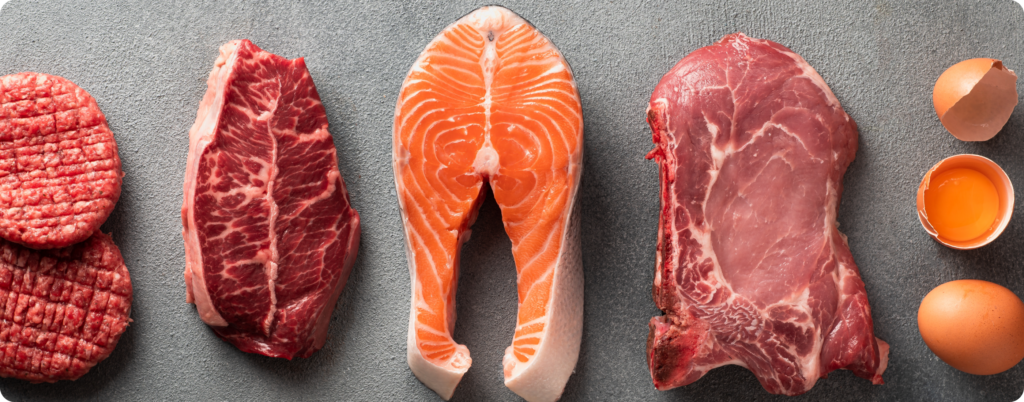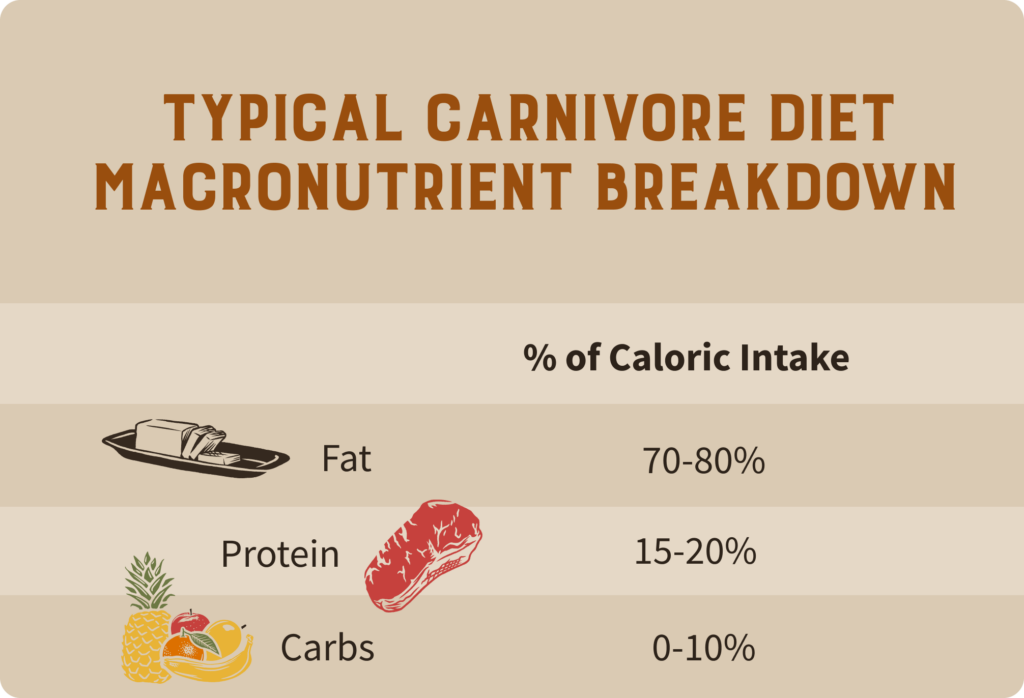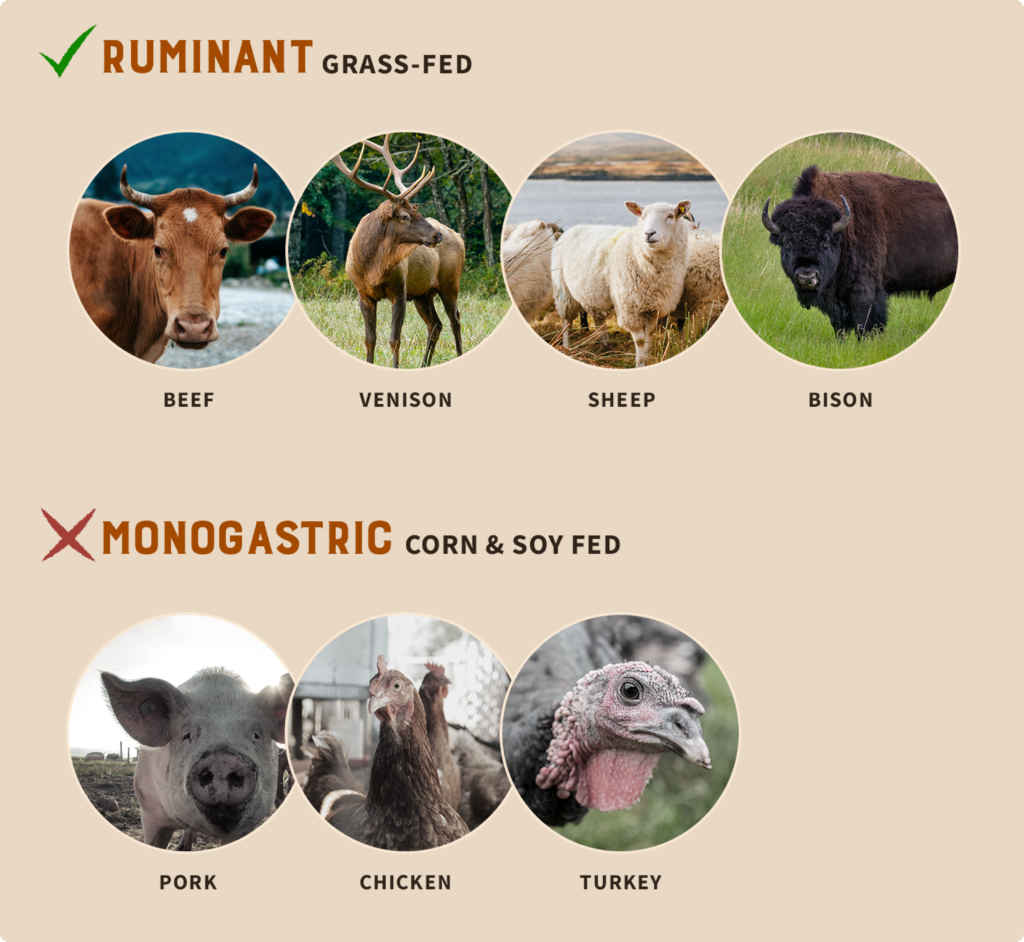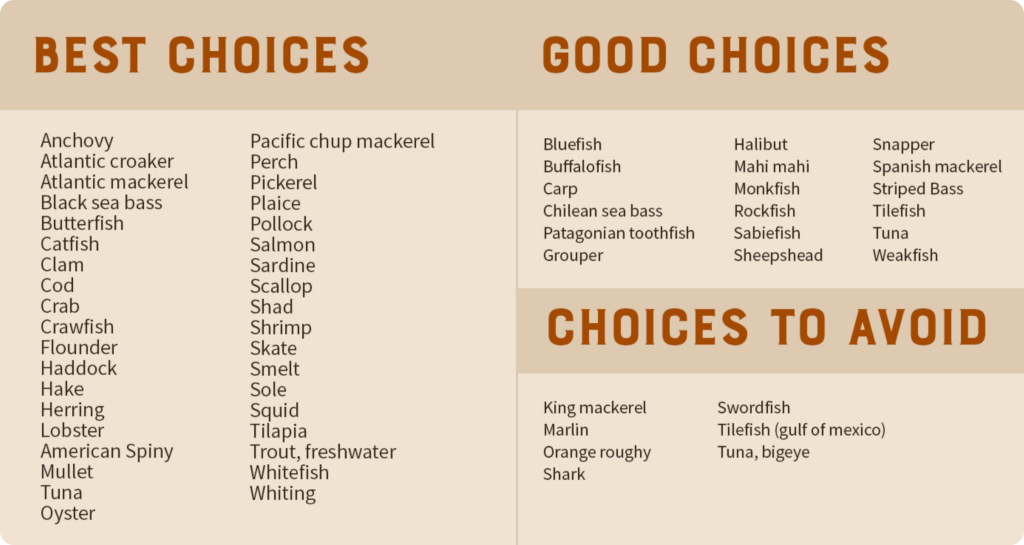PLEASE NOTE: The information in this blog is for educational purposes only. It is not a substitute for professional medical advice. Consult your healthcare provider if you’re seeking medical advice, diagnoses, or treatment.
Despite the widespread skepticism, the carnivore diet has gained popularity thanks to personalities like Joe Rogan, Dr. Shawn Baker, Paul Saladino, and Dr. Ken Berry.
Few diets bring about terrified looks and skepticism like the carnivore diet. While it’s not exactly new, it has become a household name alongside the likes of ketogenic and vegan diets.
While we no longer advocate for a 100% carnivore diet (more on why later), it can still be a helpful short-term strategy in specific scenarios when followed with the help of a medical professional.
This article aims to simplify what to eat on a carnivore diet and share other insights to help you avoid common mistakes on a carnivore diet.
What is the Carnivore Diet?
The carnivore diet focuses on consuming foods from animals while avoiding fruit, vegetables, grains, and highly processed foods. A carnivore diet includes small amounts of carbohydrates from dairy or sometimes none at all.

Most participants start a carnivore diet for health reasons such as weight loss, diabetes, or autoimmune diseases (1).
So, what can you eat on a carnivore diet? Let’s find out.
What Do You Eat On a Carnivore Diet?
It’s important to incorporate as much variety into your carnivore diet as possible to avoid missing essential nutrients. Most carnivore experts also suggest consuming a ratio of 70:30 for fat to protein, so fat is priority #1 on this diet.

Below is a list of foods to consider for your carnivore diet.
Meat
We primarily suggest consuming meat and organs from grass-fed, grass-finished ruminant animals. This ensures that the animals are raised on ancestrally consistent diets instead of grains like corn or soy.
Ruminant animals like cattle, bison, elk, deer, or lamb have four stomachs and unique microbes, which give them the ability to convert polyunsaturated fatty acids (PUFAs) into healthy saturated fats (2).

On the other hand, monogastric animals like pigs, chickens, turkeys, and ducks only have one stomach where their digestion occurs. Like humans, they cannot convert excess PUFAs into healthy saturated fats. Companies like White Oak Pastures or Nose To Tail sell low-PUFA options to alleviate this excess consumption.
Thankfully, finding high-quality meat and organs is possible throughout the United States. Eat Wild is another fantastic resource for finding high-quality meat in your area.
Seafood
Seafood can be incredibly nutritious, but modern seafood is often contaminated with microplastics or heavy metals (3, 4).
Reducing your seafood intake and ensuring you’re sourcing safer options may be helpful. Here are the FDA ratings for what to eat and what to avoid:

Organ Meats
While muscle meats are nutritious, these cuts often pale in comparison to the nutritional value of organ meats. Organ meats like liver provide highly bioavailable vitamins A and B, copper, and other key nutrients (5).
It’s best to incorporate liver, bone marrow, kidney, pancreas, or spleen into your diet from various animals such as cows, lambs, or chickens. Oxtail, tongue, and beef cheeks are also staples across the globe.
Bone broth is also popular on a carnivore diet. Made by simmering animal bones, bone broth is a great source of amino acids, protein, and minerals like calcium and magnesium (6, 7).
Dairy
Dairy isn’t included in all carnivore diets, given it’s a source of carbs, but it can still be a helpful addition.
Milk, in particular, is a fantastic source of protein, vitamin D, choline, and electrolytes like calcium and magnesium (8, 9, 10). For athletes or regulars in the gym, milk can improve muscle protein synthesis and recovery following exercise (11).
Aside from milk, popular dairy products include cheese, yogurt, kefir, cottage cheese, sour cream, and whipping cream.
Milk intolerances differ based on the individual, but raw, A2, or low-temperature pasteurized options may be better tolerated (12).

Eggs
Eggs are another high-quality source of protein and fat. They offer all nine essential amino acids along with folate, vitamin B12, vitamin K2, selenium, iodine, and naturally occurring vitamin D (13).
To find the highest-quality eggs, it can be helpful to form a relationship with a local farmer to learn more about the hen’s living conditions, diet, and quality of life. The hens should ideally have ample access to the outdoors (pasture-raised) and forage for bugs, worms, and other natural choices.
Other Foods to Eat on a Carnivore Diet

Beef tallow, ghee, butter, and lard are all animal fats that can be used to cook or boost your fat intake.
Salt is another valuable addition to consider for your carnivore diet. It’s a source of sodium, an essential nutrient needed for multiple physiological processes (14).
Foods to Avoid on a Carnivore Diet

A carnivore diet avoids these six main categories of food:
- Processed foods
- Fruit
- Vegetables
- Leaves, stems, and roots
- Seeds (nuts, grains, legumes)
- Alcohol, soda, and energy drinks
Coffee is technically not a part of the carnivore diet, but many still include it.
When it comes to spices, it’s common only to use salt and avoid spices like pepper, garlic, or onion powder.
Another tricky item is honey. While it is an animal product, it’s a rich source of carbohydrates, so honey is generally avoided in a carnivore diet.
Other than that, what not to eat on a carnivore diet is pretty simple!
Supplements to Consider on a Carnivore Diet
One of the pitfalls of a carnivore diet is that you might miss out on crucial nutrients. That’s why it’s important to eat a wide variety of foods, including cuts of meat, consider supplementation, and follow the diet with the guidance of a medical professional.
These areas, in particular, may be worth a closer look on a carnivore diet:
Vitamin C
Contrary to popular belief, meat and organs actually contain vitamin C (15). However, it’s found in smaller amounts than plant foods and can be lost with specific cooking methods (16).
Humans cannot produce vitamin C, which needs to be obtained from food (17). So, consider adding a vitamin C supplement or include foods like organ meats and salmon roe (18).
Electrolytes
If you’re not eating fruit, bone broth, or milk products, you may be lacking electrolytes such as magnesium, potassium, and calcium (19).
Proper calcium intake is required for bone health for all ages (20). Magnesium is another electrolyte needed for energy production, muscle contraction, and bone development (21). To obtain this mineral, carnivore dieters may need to supplement or include electrolyte mixes such as Re-Lyte.
A popular supplement option for carnivores is Bone Matrix from Heart & Soil. This supplement is made purely from the bones of grass-fed and finished, regeneratively raised New Zealand cows and provides essential minerals, including boron, calcium, phosphorus, strontium, and manganese.
Organ Supplements

We suggest consuming fresh organs if you can access them and enjoy the taste; if not, we offer over a dozen options made with the highest quality grass-fed, grass-finished organ meats!
Carnivore vs Animal-Based: Which Should You Choose?
While the carnivore diet can be extremely beneficial for the short term, it’s common to run into electrolyte, hormonal, or sleep issues when followed in the long term. Not to mention, the strict regimen of a carnivore diet may lead to boredom or take a toll on your social life.
There’s no one-size-fits-all approach to your diet, but we advocate for an animal-based diet in most instances. This way of eating is essentially a carnivore diet with fruit, honey, and other low-toxicity carbohydrates.
The animal-based diet offers the same benefits as the carnivore diet, such as improved gut health and weight loss, without all the restrictions.
It’s not a fad diet or a ploy to fix all of your challenges quickly. You’re simply prioritizing foods humans have eaten for thousands of years while avoiding highly processed foods that have only been around for the evolutionary ‘blink of an eye’.
Now You Know What to Eat on a Carnivore Diet!
Hopefully, this article will help you feel more confident and avoid the common pitfalls of the carnivore diet!
Although Heart & Soil advocates for an animal-based diet, the carnivore diet is wildly popular given the positive changes that it can lead to. Countless people have improved their gut, skin, mental health, and countless areas by adhering to these principles.
Knowing what to eat on a carnivore diet can be confusing, but the simplicity appeals to many.
Subscribe to future articles like this: